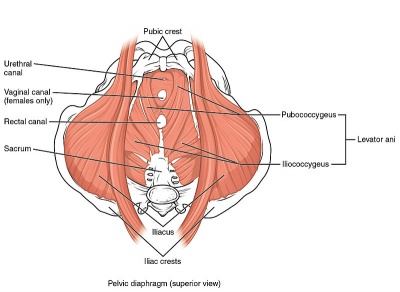Background
Pregnancy-related back and pelvic girdle pain is a common condition varying from self-limiting symptoms of short duration during pregnancy to great pain and disability both during and after pregnancy. Pelvic girdle pain (PGP) generally arises in relation to pregnancy, trauma, arthritis and osteoarthritis. Pain is experienced between the posterior iliac crest and the gluteal fold, particularly in the vicinity of the sacroiliac joints (SIJ). The pain may radiate into the posterior thigh and can also occur in conjunction with/or separately in the pubic symphysis. The endurance capacity for standing, walking, and sitting is diminished. The diagnosis of PGP can be reached after exclusion of lumbar causes. The pain or functional disturbances in relation to PGP must be reproducible by specific clinical tests.[1]
Objective
The PGQ is a condition-specific instrument that assesses activity limitations and symptoms in patients with pelvic girdle pain. It was developed for patients with pelvic girdle pain during pregnancy as well as postpartum and can be used in research and clinical practice.[1]
Intended Population
People with Pelvic Girdle Pain during pregnancy and postpartum.[1]
Method of Use
Self-report questionnaire of 20 activity items and 5 symptom items scored on a 4-point response scale. Each question is scored from ‘Not at all’ (0) to ‘To a large extent’ (3). Questions on the activity sub-scale range from difficulty with dressing, climbing stairs, doing housework, rolling in bed to pushing a shopping cart. Item scores are summed and transformed to yield a score of 0 to 100, where 100 is the worst possible score.[1]
Evidence
There is little evidence for the measurement properties of instruments commonly used for women with pelvic girdle pain. The PGQ is the first condition-specific measure developed for people with PGP. The PGQ had acceptably high reliability and validity in people with PGP both during pregnancy and postpartum, it is simple to administer, and it is feasible for use in clinical practice. [1]
Reliability
Test-retest reliability showed high intraclass correlation coefficient estimates: .93 (95% confidence interval 0.86–0.96) for the PGQ activity subscale and .91 (95% confidence interval 0.84–0.95) for the PGQ symptom subscale. [1]
Validity
The PGQ was found to have content and convergent validity [2]
Resources
Open Access Article: References
Ola!
Como podemos ajudar?


